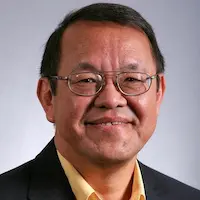Speech Processing
Here you can find lists of great Speech Processing books recommended by some of top experts form best universities and leading technology companies.

Speech processing is a highly interdisciplinary field that combines concepts from electrical engineering, computer science, and linguistics. At its core, speech processing is the process of capturing, analyzing, and manipulating spoken language in order to enable a wide range of applications such as speech recognition, speech synthesis, and speaker identification. In this article, we will explore the basics of speech processing, including the different types of speech signals, the different types of processing techniques, and the applications of speech processing in various fields.
There are two main types of speech signals that are typically processed: analog and digital signals. Analog speech signals are continuous signals that are typically captured using a microphone, while digital speech signals are discrete signals that are typically captured by digitizing an analog signal. Digital speech signals are more common in speech processing applications because they can be easily stored, transmitted, and manipulated using computers.
One of the most important processing techniques used in speech processing is speech recognition. This is the process of converting spoken language into text or other forms of computer-readable data. There are two main types of speech recognition: isolated word recognition, which is used to recognize a single word from a limited vocabulary, and continuous speech recognition, which is used to recognize speech in a continuous stream.
Another important processing technique used in speech processing is speech synthesis. This is the process of converting text or other forms of computer-readable data into spoken language. There are two main types of speech synthesis: rule-based synthesis, which uses a set of predefined rules to generate speech, and concatenative synthesis, which uses a database of recorded speech sounds to generate speech.
Speech processing is also used in speaker identification and verification. This is the process of identifying or verifying the identity of a speaker based on their speech. Speaker identification is used in applications such as security systems, while speaker verification is used in applications such as voice biometrics.
Speech processing is also used in automatic speech translation which is the process of translating spoken language from one language to another. This is a highly challenging task that requires the use of advanced techniques from natural language processing, machine learning, and speech recognition.
Another important application of speech processing is in the field of assistive technology for people with speech impairments. This includes the development of speech-generating devices, which can help people with speech impairments to communicate, and the development of speech recognition systems that can be used by people with speech impairments to control computers or other devices.
In conclusion, speech processing is a highly interdisciplinary field that combines concepts from electrical engineering, computer science, and linguistics. The different types of speech signals, the different types of processing techniques, and the applications of speech processing in various fields are all important considerations when working with speech. Speech processing plays a critical role in speech recognition, speech synthesis, speaker identification, automatic speech translation, assistive technology, and many other fields. The field is continuously advancing and improving, with new techniques and technologies emerging constantly.